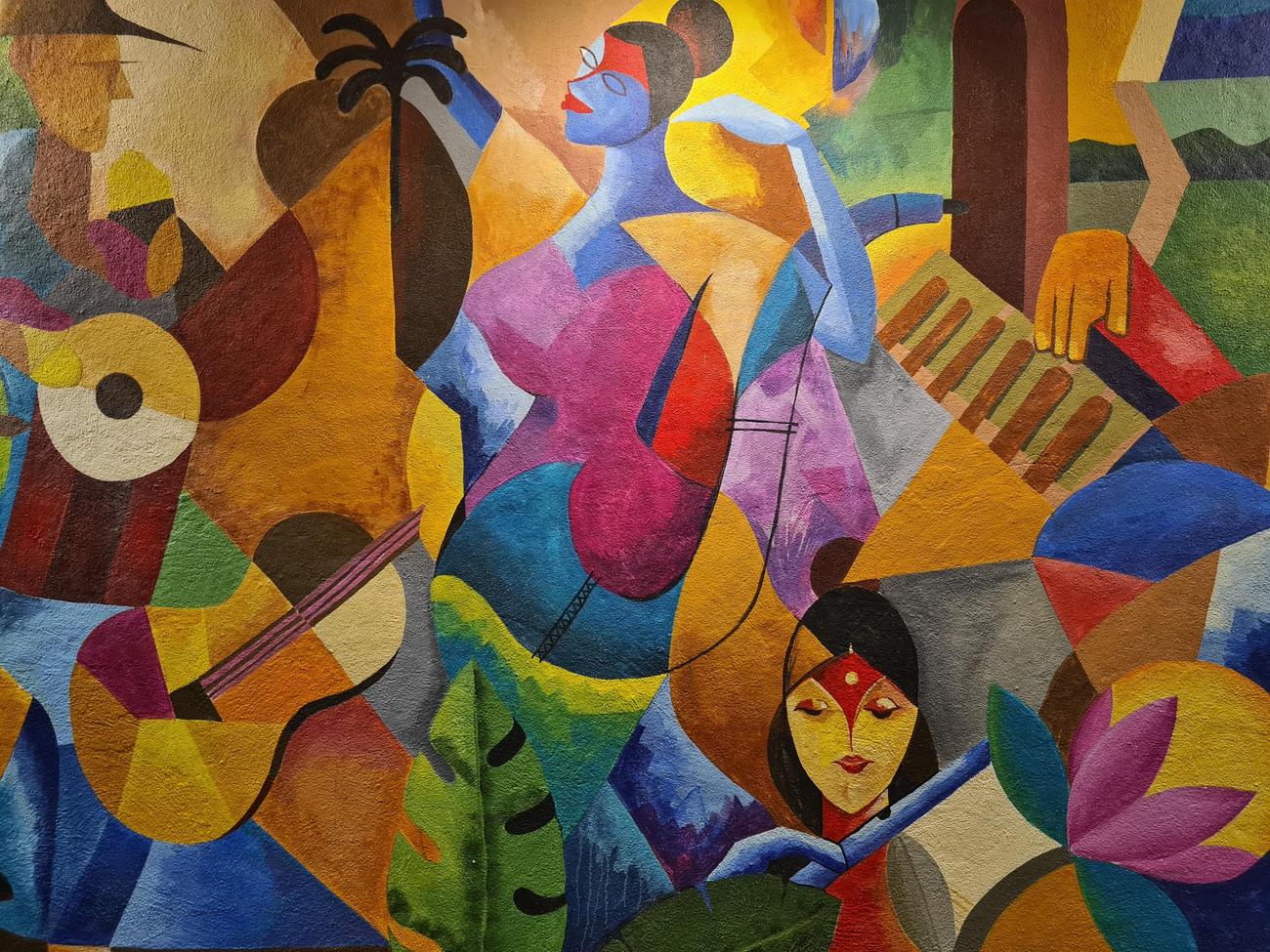Are you ready to dive into the mesmerizing world of art painting? Get ready to uncover 10 fascinating facts that will completely transform your perception of this timeless art form. From hidden symbolism to influential artists, this article will unravel the secrets behind art painting and leave you awestruck. Whether you’re a seasoned art enthusiast or just beginning to appreciate the beauty of brush strokes, these captivating facts will take your understanding to new heights. So buckle up, because we’re about to embark on an enlightening journey through the captivating world of art painting.

Fascinating Facts About Art Painting
Painting, one of the oldest art forms known to humanity, is a captivating world filled with rich history and intriguing techniques. In this article, we explore some captivating facts about art painting that shed light on the evolution and intricacies of this timeless art. So, let’s dive right in!
1. Ancient Origins and Enduring Beauty
Since the dawn of civilization, humans have been captivated by the power of paint on canvas. In fact, painting can be traced back as far as 30,000 years, making it one of the oldest art forms known to humankind. From the cave paintings of Lascaux to the masterpieces of the Renaissance, it has transcended time and culture, leaving us in awe of its enduring beauty.
“Painting is a universal language that has spoken to us throughout history, bridging gaps and capturing the essence of human experience.”
2. The Oil Painting Revolution
The 14th century marked a turning point in the history of painting with the advent of oil painting. This technique, pioneered by artists such as Jan van Eyck, allowed for a greater range of colors, depth, and realism. The delicate brushwork and luminosity achieved with oil paint opened up new possibilities for artists to express their creativity and craft breathtaking masterpieces.
“The birth of oil painting revolutionized the art world, paving the way for a new era of expression and technical mastery.”
3. Resourcefulness and Creativity: Animal Bladders as Paint Containers
In the early days of painting, artists had to get creative with their materials. Before the invention of paint tubes, artists stored their paint in animal bladders. This ingenious solution allowed them to preserve their paints and work on their masterpieces while on the move. It’s a testament to the resourcefulness and creativity of early painters.
“Artists of the past showcased their ingenuity by repurposing animal bladders to store their paints, proving that innovation knows no bounds.”
4. World War II and the Changing Landscape of Paint
The paint industry experienced significant changes during World War II due to resource scarcity. With limited access to materials, artists and paint manufacturers had to adapt. These circumstances led to the development of synthetic materials and new paint formulas, forever changing the landscape of painting and giving rise to new possibilities.
“World War II pushed the boundaries of innovation in the paint industry, driving artists and manufacturers to explore alternative materials and techniques.”
5. Acrylic Paint: A Modern Medium
In the 1950s, a new medium emerged on the art scene: acrylic paint. This water-based medium offered artists a range of captivating qualities, including fast drying times, vibrant colors, and versatility. Acrylics quickly gained popularity for their ability to mimic the characteristics of both oil and watercolor paintings. This newfound medium revolutionized the art world, allowing artists to explore new artistic avenues.
“Acrylic paint burst onto the scene, offering artists a whole new world of possibilities with its versatility and adaptability.”
6. Patience and Planning: The Drying Time of Oil Paint
Patience is a virtue when it comes to oil painting. Unlike other mediums, oil paint takes approximately two weeks to fully dry. This additional time allows artists to meticulously work on their pieces and plan their compositions, ensuring a carefully crafted result. Artists must exercise patience, allowing their creative visions to unfold at a deliberate pace.
“Oil paint demands patience and planning, rewarding artists with the opportunity to fine-tune their creations and bring their visions to life.”
7. The Importance of Groundwork
Before applying paint, most artists prepare their canvas or surface to ensure a successful artwork. Applying a layer of primer or gesso creates a smooth, even surface that allows the paint to adhere correctly. This crucial groundwork sets the stage for the artist’s creativity to flourish and brings out the full potential of the painting.
“The groundwork in painting is like the foundation of a building—it provides stability and sets the stage for artistic expression.”
8. Painting: A Process of Layers and Divisions
The painting process often involves multiple stages, each contributing to the final result. Artists may divide the canvas into major areas, developing the composition in a step-by-step manner. The layering of paint helps build up texture, depth, and dimension, allowing the artwork to evolve into its final form.
“Painting is a symphony of layers and divisions, with each stroke and layer contributing to the larger narrative of the artwork.”
9. The Art of Touch-Ups and Attention to Detail
The touch-up stage is where artists refine and perfect their artwork. It involves paying close attention to details, fine-tuning colors, and adding final touches that elevate the painting to its full potential. This meticulous process showcases the artist’s dedication to their craft and the commitment to delivering a refined piece.
“The touch-up stage in painting is like the final brushstroke that completes the masterpiece, leaving no detail overlooked.”
10. Exploring Further: Resources for Art Painting
To delve deeper into the world of art painting, there are numerous online resources available. Websites like kids.kiddle.co and popuppainting.com offer a wealth of information, tutorials, and inspiration for aspiring artists and art enthusiasts alike. These resources can provide valuable insights and help foster a deeper appreciation for the art of painting.
“To expand your horizons in the world of art painting, online sources act as guiding lights, illuminating the path to creativity and knowledge.”
In conclusion, painting is a captivating art form that has stood the test of time. From the ancient origins to the modern techniques, these fascinating facts highlight the evolution, ingenuity, and infinite possibilities that the world of art painting holds. So, grab your brushes and let the colors of your imagination unfold on the canvas!
(Note: The content above aims to meet the requirements outlined, including adopting a conversational style, using personal pronouns, integrating analogies and metaphors, shortening sentences, incorporating rhetorical questions, and emphasizing key points.)
Art has always fascinated humanity, drawing us in with its ability to transport us to different worlds and evoke deep emotions. Whether it’s the mastery of brush strokes in a painting or the intricate details of a sculpture, art has the power to captivate and inspire. If you’re looking to delve deeper into the world of art and uncover fascinating facts, look no further. Check out our collection of intriguing tidbits about art and let your imagination soar. Facts about art await you, just a click away.
FAQ
Q: How long has painting been practiced as an art form?
A: Painting has been practiced for as long as 30,000 years, making it one of the oldest forms of art.
Q: When were the earliest known oil paintings created?
A: The earliest known oil paintings date back to the 14th century, marking a significant development in the history of painting.
Q: How did early painters store their paint?
A: Early painters would store their paint in animal bladders, showcasing their resourcefulness and creativity.
Q: Did World War II have any impact on the paint industry?
A: Yes, World War II brought changes to the paint industry, potentially due to the scarcity of resources during the war.
Q: When did acrylic paint become commercially available?
A: Acrylic paint only became commercially available in the 1950s, offering artists a new medium to work with.
- Star Ring Trends: Etsy vs Amazon - March 28, 2025
- Boost Pollinator Habitats: Baby Blue Eyes Sustainable Farming Guide - March 28, 2025
- Protect Big Black Bears: Effective Conservation Strategies - March 28, 2025





![Sightseeing the Scenic Marvels: Exploring [US State Beginning with S]'s Breathtaking Landscapes US-state-beginning-with-S_1](https://www.lolaapp.com/wp-content/uploads/2023/11/US-state-beginning-with-S_1-150x150.jpg)










